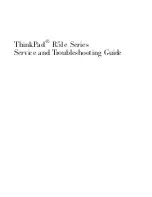
CHAPTER 23. LIVE INSTRUMENT REFERENCE
433
string into motion.
The Prot knob (for protrusion ) adjusts how much of the plectrum's surface area is placed
under the string. Lower values results in a thinner, smaller sound, as there is less mass
setting the string into motion. The Stiffness, Velocity and Damping knobs behave similarly
to the Hammer mode. And as with the previous modes, all three of these parameters can
be modulated by velocity or note pitch via the Vel and Key sliders.
The Position knob is applicable to each excitator model, and speci es the point on the string
where the excitator makes contact. At 0%, the excitator contacts the string at its termination
point, while at 50% it activates the string at its midpoint. The behavior is a bit different if
the Fix. Pos switch is enabled, however. In this case, the contact point is xed to a single
location, rather than changing as the length of the string changes. This behavior is similar
to that of a guitar, where the picking position is always basically the same regardless of the
notes being played. On a piano, the excitator position is relative - the hammers normally
strike the string at about 1/7th of their length - and so is best modelled with Fix. Pos turned
off. The excitator's position can additionally be modulated by velocity or note pitch, via the
Vel and Key sliders.
The Excitator section can be toggled on or off via the switch next to its name. With it off,
the string can only be activated by interaction with its
damper
. (If both the Excitator and
Damper sections are disabled, nothing can set the string in motion - if you nd that you're
not producing any sound, check to see that at least one of these sections is on.)
Please note that the Excitator section's parameters work closely together to in uence the
overall behavior of the instrument. You may nd that certain combinations of settings result
in no sound at all, for example.
















































